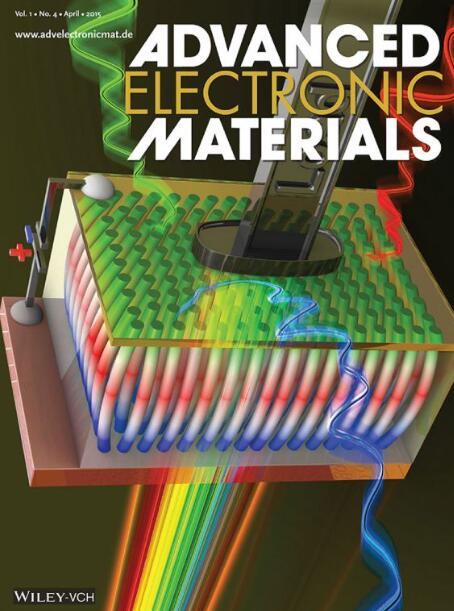Research on Resistive Switching Mechanism of SnO2/SnS2 Based Heterojunction Memory Devices
IF 5.3
2区 材料科学
Q2 MATERIALS SCIENCE, MULTIDISCIPLINARY
引用次数: 0
Abstract
This study investigates the electrical properties of the SnO2/SnS2 heterojunction as the interlayer for resistive random access memory (RRAM). In this work, (NH4)4Sn2S6 is used as a source for the production of the heterojunction. The results indicate that as the annealing temperature increases, the composition of the SnS2 based thin film changes while the cycle-to-cycle stability of the device improved. The thin film is examined by X-ray photoelectron spectroscopy (XPS), scanning electronic microscopy (SEM) and atomic force microscopy (AFM), which proves the formation of SnO2/SnS2 heterojunction. Devices with SnO2/SnS2 heterojunction exhibited lower operating voltages and more uniform resistive switching behavior. The RRAM can be repeatedly and consistently switched between a high-resistance state and a low-resistance state over 1000 cycles, with a long data retention time of > 4 × 104 s at room temperature. Meanwhile, this study explores the relationship between this type of resistive memory and the neuromorphic simulation of the human brain. SnO2/SnS2 heterojunction with 224 PJ set power at 0.4 V pulse shows excellent resistive memory characteristics. This study provides a vital reference for high-performance and long-lifespan heterojunction memory devices.

基于SnO2/SnS2异质结存储器件的电阻开关机制研究
本文研究了SnO2/SnS2异质结作为电阻式随机存取存储器(RRAM)中间层的电学特性。在这项工作中,(NH4)4Sn2S6被用作生产异质结的源。结果表明,随着退火温度的升高,SnS2基薄膜的组成发生变化,器件的循环稳定性提高。采用x射线光电子能谱(XPS)、扫描电镜(SEM)和原子力显微镜(AFM)对薄膜进行了表征,证实了SnO2/SnS2异质结的形成。具有SnO2/SnS2异质结的器件具有更低的工作电压和更均匀的电阻开关行为。RRAM可在1000多个周期内反复、一致地在高阻状态和低阻状态之间切换,数据保留时间长>;室温下4 × 104 s。同时,本研究也探讨了这种类型的抵抗记忆与人脑神经形态模拟之间的关系。在0.4 V脉冲下,设置功率为224 PJ的SnO2/SnS2异质结具有优异的电阻记忆特性。该研究为高性能、长寿命异质结存储器件提供了重要参考。
本文章由计算机程序翻译,如有差异,请以英文原文为准。
求助全文
约1分钟内获得全文
求助全文
来源期刊

Advanced Electronic Materials
NANOSCIENCE & NANOTECHNOLOGYMATERIALS SCIE-MATERIALS SCIENCE, MULTIDISCIPLINARY
CiteScore
11.00
自引率
3.20%
发文量
433
期刊介绍:
Advanced Electronic Materials is an interdisciplinary forum for peer-reviewed, high-quality, high-impact research in the fields of materials science, physics, and engineering of electronic and magnetic materials. It includes research on physics and physical properties of electronic and magnetic materials, spintronics, electronics, device physics and engineering, micro- and nano-electromechanical systems, and organic electronics, in addition to fundamental research.
 求助内容:
求助内容: 应助结果提醒方式:
应助结果提醒方式:


